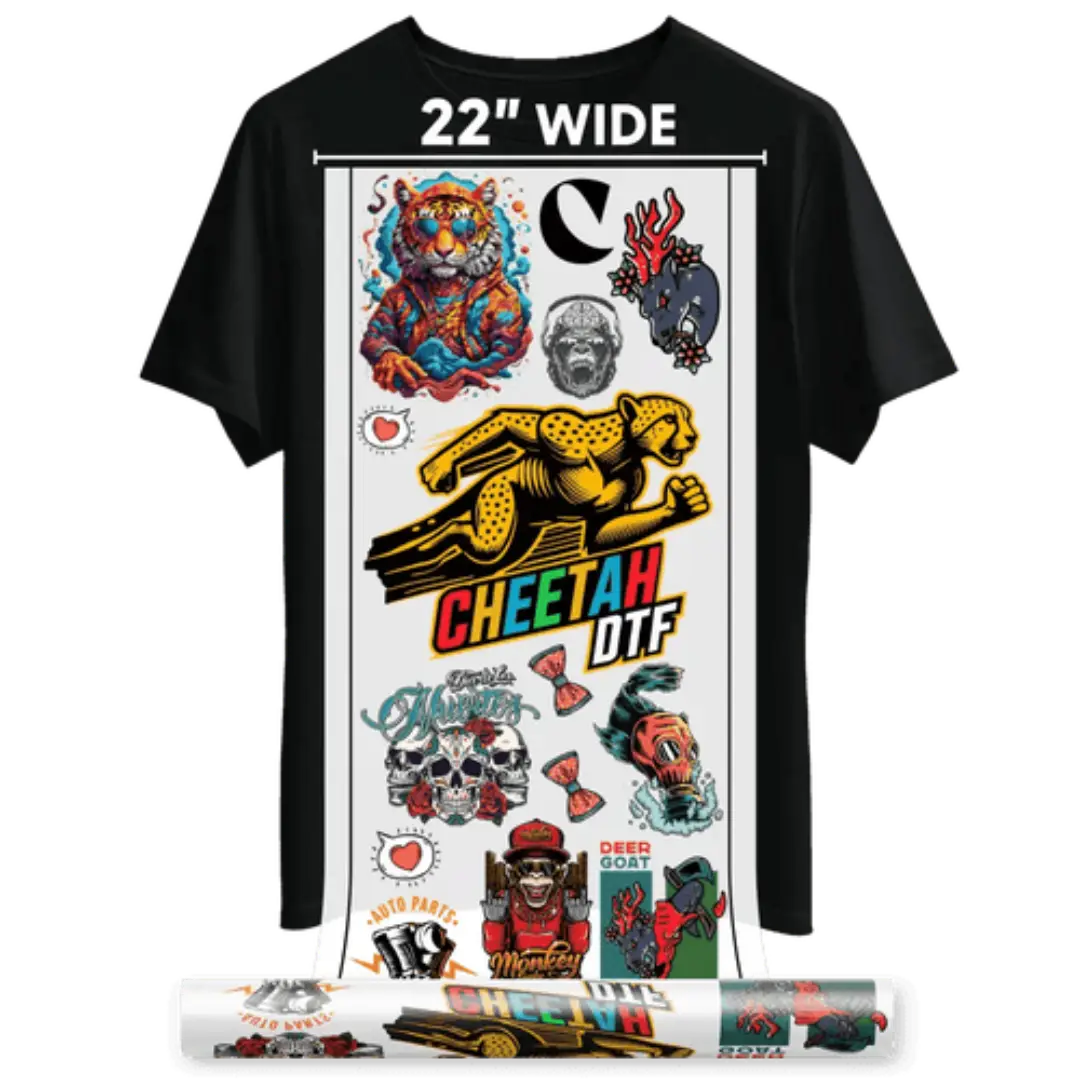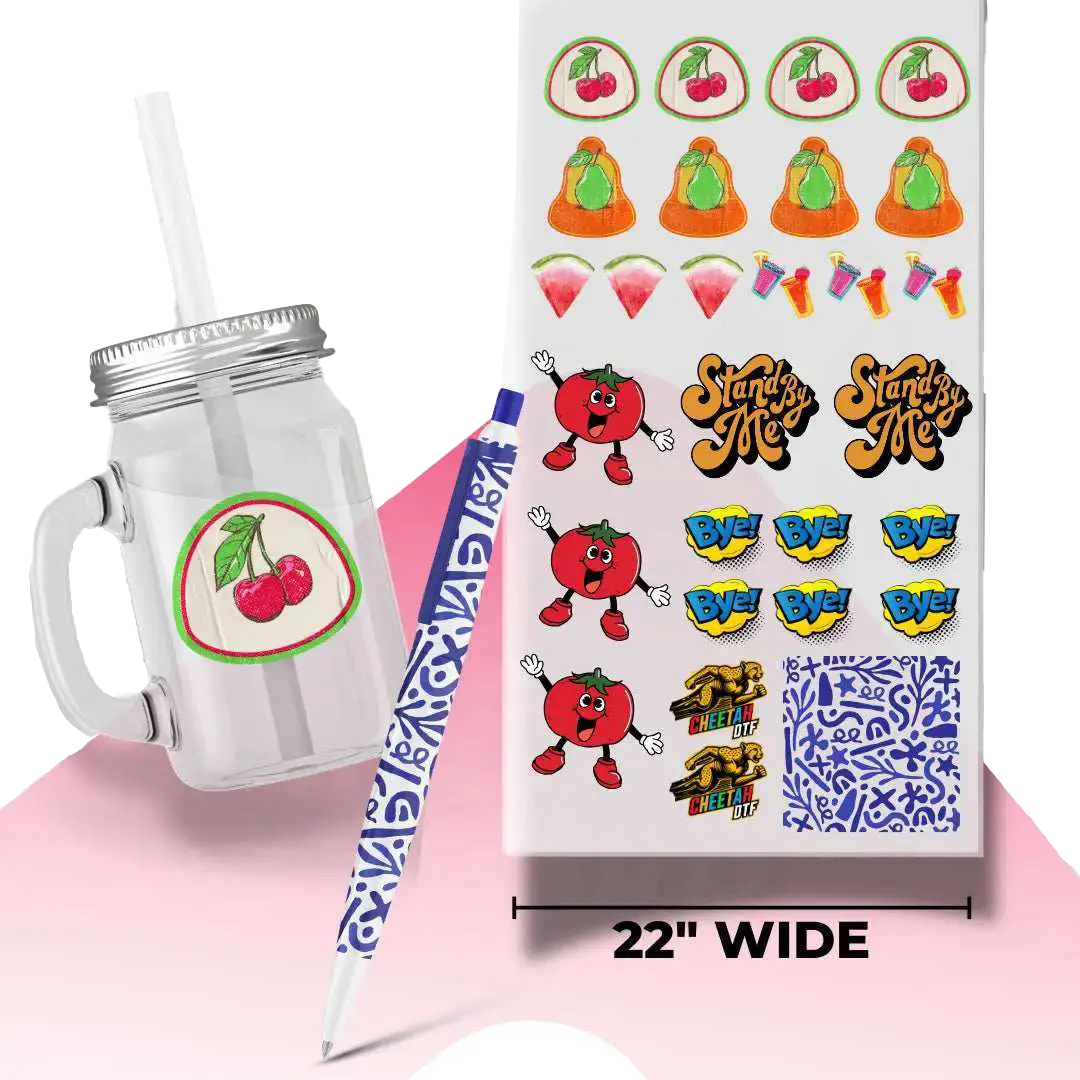Eco-Friendly DTF Printing: Reducing Plastic Waste in DTF Transfers
DTF printing is one of the easiest and profitable businesses to get into in 2025. While it’s easy to start, it comes with environmental costs, most notably plastic waste. Fortunately, eco-friendly DTF printing is a viable option for reducing the environmental impact of your DTF process through a few carefully considered strategies. This article will examine why plastic waste is a concern in DTF printing, the methods for mitigating it, and how innovative businesses and companies are working to develop more environmentally friendly DTF operations, including sustainable fashion printing.
Eco-friendly DTF Printing Challenge: The Plastics
DTF printing involves using heat and glue powder to transfer designs onto unique PET (polyethylene terephthalate) film, which is then applied to fabric. Although it is also a form of plastic that does not degrade readily, PET film is heat-resistant and durable, properties ideal for transfers. The quantity of plastic garbage can be enormous when you compile test prints, misprints, and single-use film sheets.
Furthermore, the carbon footprint is increased by the plastic bags or containers sometimes used in the process for packing, shipping materials, and adhesive powders. Many print companies and artists are seeking solutions to sustain their businesses without harming the environment, as plastic waste receives increasing international attention, prompting a shift toward environmentally safe printing methods. Therefore, as a responsible entrepreneur, you should also consider eco-friendly practices.
Practical Methods to Decrease Plastic Trash in DTF
The good news is that reducing plastic waste doesn't always require a complete setup overhaul or the purchase of new technology. Being more thoughtful and more deliberate with the green garment printing, you can effectively reduce your carbon footprint. Making your DTF printing procedure more environmentally friendly calls for:
1. Cut waste by using gang sheets
Gang sheets are large PET films on which multiple designs are combined rather than printed separately. Optimizing the arrangement allows you to make the most of every inch of space. This lowers expenses, speeds up production, and reduces plastic waste. Online gang sheet builder tools make it easier to add multiple designs to a single sheet. Before printing, use a design program to preview your layout and minimize blank areas.
2. Select recycled or recyclable PET films
Several vendors now offer PET films that are partially made from recycled plastic. Selecting recycled material lowers demand for new plastic, even if they are still PET and won't decompose like paper. Check also whether your local recycling facilities accept clean PET film trash. Though printed or adhesive-coated PET is not always tolerated, off-cuts or unprinted fragments can occasionally be recycled.
3. Invest in quality to avoid prints
Wasted film frequently results from color inconsistencies, film jams, and test prints. Reliable prints, excellent RIP software, and accurately calibrated color profiles will help considerably lower misprints. Steps for quality control, such as checking the resolution of the artwork, utilizing low-impact printing techniques, verifying color profiles, and applying adhesive powder, can also save material by identifying mistakes before printing.
4. Keep your film safe from moisture
PET film can be ruined by moisture, heat, and direct sunlight, rendering it unworkable and necessitating a new print. Storing film in a cool, dry area, out of direct sunlight, helps it maintain its good form for longer. Keep open film rolls dust-free by utilizing resealable bags or airtight containers.
5. Improve the use of adhesive powder
Often, excess adhesive powder is thrown away, but not in ethical apparel production. Applying exactly the right amount of powder by hand or with an automatic powder shaker helps you complete the task efficiently without waste. Some companies even recycle spilled powder from clean surfaces, ensuring it's free of lint and debris.
6. Research biodegradable adhesive powders
Although conventional TPU (thermoplastic polyurethane) powder is not compostable, work is being done on greener substitutes. Further reducing the plastic content of your transfers can be accomplished by obtaining biodegradable or partially biobased powders.
7. Reuse backing film
The PET film backing is often discarded after a transfer is pushed. Still, for sustainable DTF transfers you may use clean, whole film bits as protective layers when packaging your customers' goods in shipping boxes. Reusing the film can reduce overall plastic waste and significantly lower your costs.
8. Provide eco-friendly packaging
Finished DTF transfers are securely stored in transit using biodegradable mailers, recycled cardboard boxes, or paper-based protective sheets. Over time, even small changes, such as replacing recycled kraft paper with bubble wrap, add up and create a hazard for the environment. Therefore, it is important to consider your packaging options.
Beyond Supplies: Developing a Greener DTF Business
Reducing plastic garbage requires not just what you use but also how you run your business and interact with your clients.
Educate your consumers
Explain to your clients why you choose gang sheets, water-based DTF ink, recycled materials, or environmentally friendly packaging. Many customers seek out sustainable companies, and sharing your efforts helps develop loyalty and trust. Your website or each order may include a remark explaining your environmental decisions. Alternatively, you can add a sustainability section.
Cooperates with like-minded suppliers
Partner with suppliers that prioritize sustainability, whether through the use of recyclable goods, environmentally safe printing methods, renewable energy sources, or minimal packaging. The supply chain is just as important as the end goods.
Keep tabs on and count your waste
Keep basic records of the number of misprints you discard, the number of sheets you use, and the remaining powder. Tracking enables you to identify patterns, establish objectives, and monitor progress over time.
Why choose Cheetah DTF to create an environmentally friendly DTF company
Cheetah DTF helps you lower demand for plastics by providing eco-friendly DTF printing supplies, including long-lasting PET films and recycled material. Their sophisticated film equipment and precise adhesive powders help reduce misprints and waste, thereby lowering costs and conserving resources. Sharper, more consistent prints will save you time by reducing the need for reprinting or discarding damaged transfers.
Beyond materials, we help eco-conscious companies by providing expert guidance on design optimization (like gang sheets and non-toxic DTF inks) and suggesting eco-friendly packaging options for shipped completed transfers. We empower print businesses to achieve professional-quality results with a lower environmental footprint through dependable products and a commitment to sustainability. Working with a company that values sustainability helps you on your path to becoming an eco-friendly DTF business.
Ready to print greener? Try our Cheetah DTF Gang Sheet Builder today! Maximize every inch of film, reduce plastic waste, and save money —all while creating stunning custom transfers.


